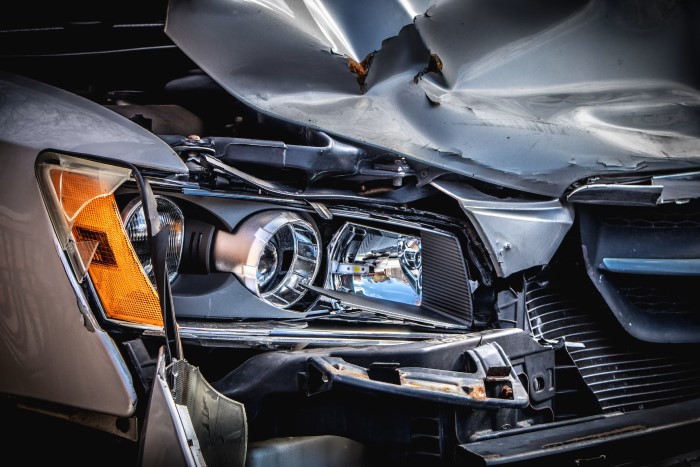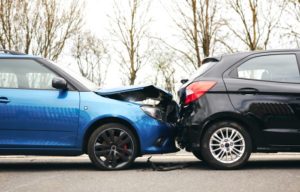
The term “T-bone” refers to the intersection of two vehicles, one going straight and the other going at an angle. These accidents are some of the most severe that you can get in a car crash. They often cause serious injuries due to the force being applied from both sides. They usually damage vehicles, pedestrians, or cyclists who may have been hit by one.
What Is a T-Bone Accident?
A T-bone accident is a type of collision that forms a T shape. In these accidents, one vehicle’s front hit another car’s side. As you might imagine, this type of crash is extremely dangerous for drivers and passengers. According to the National Safety Council, eight thousand people died in T-bone accidents in 2020.
The driver on the left side will be struck by a vehicle approaching from behind and traveling at high speeds, often more than 70 mph (113 km/h). T-bone car accidents can occur in many different situations, not just intersections.
T-bone accidents can occur at various places, such as on a highway, interstate, or a parking lot. Regardless of the cause or place, T-bone collisions are common in the USA.
What Are the Causes of T-Bone Accidents?
There are several causes of T-bone accidents. Accidents can happen when a driver fails to yield at a four-way stop or runs a red light. According to the Insurance Institute for Highway Safety (IIHS), 928 people died, and an estimated 116,000 were injured in 2020 when other drivers ran red lights. Accidents can also occur when a driver is speeding and fails to stop in time for an intersection or pedestrian crossing.
But T-bone accidents also occur when drivers are distracted by their phones, eating, or not paying full attention to the road. And sometimes, these collisions happen because drivers are influenced by drugs or alcohol.
What Are the Most Common Injuries in a T-Bone Accident?
When you’re involved in a T-bone accident, the most common injuries are:
- Head injuries and brain damage. Often, head injuries are caused by the impact of the vehicle hitting your body. They can range from a concussion to brain damage that requires surgery or paralysis.
- Back injuries. During a collision, your neck can be strained or broken. Your back can also be injured if you’re thrown forward into it by someone else’s car, which is called whiplash.
- Broken bones are also common in T-bone accidents, as they can rupture the bone beneath the area of the collision. In some cases, the impact can cause a broken bone to splinter into several pieces (called comminuted fractures).
- Spinal cord injury. If your head or spine is injured during a car crash, the impact can cause spinal cord damage. This can lead to paralysis or loss of sensation below the level of injury.
- Chronic pain.
- Post Traumatic Stress Disorder (PTSD). Going through a dangerous event like a car accident may cause PTSD. A recent study shows that a high percentage (15.4) of car accident survivors probably experience PTSD.
If you have one of these types of injury, it’s essential not only to get treatment for pain and other symptoms but also to make sure that any problems don’t get worse over time as they heal on their own, which could lead to permanent disability down the line.
How to Avoid Being in a T-Bone Accident
Here’s how to avoid being in a T-bone accident:
- Make sure you don’t drive while distracted. That means keeping your eyes on the road and your hands on the wheel, not on your phone.
- Don’t text while driving. It’s very easy to get distracted if you do this while driving, and if you’re texting while driving, you may not even notice someone is coming up on your side until it’s too late. According to data from the National Highway Traffic Safety Administration (NHTSA), 3,142 people lost their lives in an accident due to distracted driving.
- Don’t eat while driving. This is because eating while driving can take your mind off the road and put it on something else.
- Be aware of what’s happening around you. If someone swerves into your lane or cuts you off, slow down immediately and get out of their way. Don’t try to overcorrect for them. That could cause a t-bone collision.
- Always check your mirrors before changing lanes or making a turn. This will help you know where other drivers are so you don’t hit them with your vehicle.
- Keep an eye on blind spots and other places where other cars may not be visible (like when pulling out of a driveway). Avoid those spots if possible and ensure that other drivers can see you before sudden moves are made on either side of the road.
What Should You Do if You’re Injured in a T-Bone Accident?
If you have been injured in a T-bone accident, seek medical attention immediately. Not only will you likely have some broken bones, but it’s possible that you could have internal injuries that aren’t obvious at first glance.
You should also call the police and report the accident if any injuries were involved. The police can help determine who was at fault for causing the crash, which may help speed up your insurance claims process if you file them with your medical bills.
A lawyer can help you get the compensation you deserve if you’re injured. The Association for Safe International Road Travel estimates that road crashes cost the U.S. more than $380 million in direct medical costs yearly. The cost of medical care after a car accident can be overwhelming.
A lawyer will evaluate your case and determine whether you have grounds to sue for damages. Look for an attorney who has experience with cases like yours. Your attorney must know how to handle these cases to help guide you through the process.
Conclusion
You must get medical treatment immediately if you have been injured in a T-bone accident. Contact a personal injury lawyer if you have questions about what to do after an accident or injury. The attorney will be in the best position to help you out of the situation and guide you with the next steps. He or she will also be able to assist you with filing a claim for damages.







